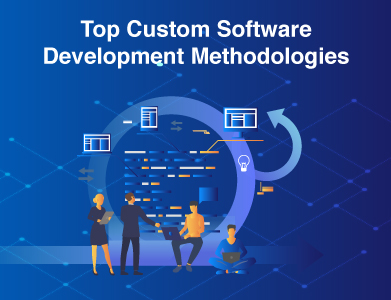EHR Integration for Healthcare Organizations: A Complete Guide
 Admin
Admin Healthcare
Healthcare Dec 19, 2024
Dec 19, 2024

Table of Content
The Healthcare world which is heavily dependent and driven by technological solutions and breakdown in any system can create medical urgency. Suppose doctors are trying to access a patient’s recent medical reports and records, only to find those records stored in a separate software system that doesn’t sync with your clinic’s EHR. It will be a nightmare for hospital administration if your computer systems are not compatible with each other. These errors can be costly and time consuming. These errors can create difficulty in patient care.
The Solution to these problems is EHR(Electronic Health Record) Integration. This allows health organizations to integrate several computer systems for seamless exchange of medical data. EHR integration will not only resolve all these operational errors, but it will cost effective and improve patient experience. This will make it easy to follow HIPAA compliance and regulations. Let’s deep dive into the EHR integration process.
Understanding EHR Integration

EHR is the process of connecting several computer and database systems together to access patient data by different hospital departments and computer systems. This allows several users to access patient medical history, medical bills and claims data in real-time. This process allows sharing information between patients and doctors, which make treatment transparent & safe.
How It Works
EHR integration works on two major messaging protocols which have been utilized for interoperability in healthcare. It works on HL7 and FHIR protocols for seamless collaboration between different medical software systems.
HL7(Health Level 7): HL7:Health Level Seven International, a non-profit organization formulated these standards. It is a set of standards for sharing medical data between different healthcare recipients globally.
FHIR(Fast Healthcare Interoperability Resources): These are a set of regulations or standards for transferring medical data between different systems securely without considering how these data sets have been stored in that system.
Whenever you go for a medical test in the lab, these medical test results and reports once uploaded to the system then they will automatically be available to all recipients. This makes the process transparent & fast. It will improve efficiency and process.
The Problem with Fragmented Systems
Non-availability of transparency and compatibility in fragmented systems can cause issues to healthcare organizations, staff and patients.
Operational Inefficiencies
Healthcare workers often spend valuable time manually entering or retrieving patient data across multiple platforms. This will not only kill productivity of staff but also cause negligence in patient care which is not acceptable at any cost.
Studies show that 72% of healthcare providers experience challenges accessing complete patient records due to incompatible systems. In turn, this leads to delays in treatment and increased administrative burden.
Financial Losses
Disconnected systems contribute to substantial financial waste. When systems don’t integrate, redundant diagnostic tests and procedures are ordered, costing the U.S. healthcare system $30 billion annually. Additionally, manual data reconciliation for billing and claims increases labor costs and error rates.
Patient Impact
Patients bear the brunt of these inefficiencies. Repeating their medical history at every appointment and undergoing unnecessary tests can erode trust and satisfaction. Worse, incomplete records heighten the risk of medical errors. For instance, 40% of adverse drug events in hospitals are attributed to incomplete or inaccessible medication histories.
The Advantages of EHR Integration
EHR integration transforms healthcare delivery in several meaningful ways, addressing pain points and unlocking new possibilities.
1. Enhanced Patient Care
Real-time access to patient data such as lab results, medical reports, medical history and allergies will help providers to deliver safer and accurate treatment.
A study found that hospitals using integrated EHRs reduced preventable adverse drug events by 52%, highlighting the role of integration in improving patient safety.
2. Streamlined Workflows
EHR integration automates and simplifies routine tasks, saving time and reducing frustration for healthcare staff. For example:
- Lab results are automatically uploaded into patient charts.
- Appointment scheduling is synchronized across departments.
- Billing systems are pre-filled with accurate patient data.
Healthcare organizations reported a significant improvement in workflow efficiency after implementing EHR systems, As they can now spend more time with patients and less on paperwork.
3. Cost Savings
EHR Integration eliminates repetitiveness, manual labor and streamlines operations, leading to significant reductions in cost . For example:
- Avoiding duplicate diagnostic tests reduces expenses.
- Automated claims processing minimizes rejected claims and billing errors.
A healthcare provider that integrated its EHR with pharmacy and lab systems saved $2 million annually, demonstrating how integration cuts operational waste.
4. Improved Patient Engagement
EHRs often include patient portals, which empower patients to take an active role in their healthcare. Through these portals, patients can:
- View their medical records and lab results in real-time.
- Schedule appointments and receive reminders.
- Secured communication with their healthcare providers.
Organizations with integrated portals reported an increase in patient engagement, as patients feel more informed and involved in their care decisions.
5. Data-Driven Insights
Unified data enables healthcare organizations to harness powerful analytics for better decision-making:
- Population Health Management Tracking health trends to design preventive care programs.
- Predictive Analytics Identifying at-risk patients for early interventions.
- Operational Insights Analyzing resource utilization to optimize staffing and facility use.
One hospital reduced its 30-day readmission rates by 15% by leveraging analytics from an integrated EHR system, demonstrating how data-driven care improves outcomes.
Roadblocks of EHR Integration
While the benefits are significant, EHR integration is not without its challenges. Identifying and addressing these obstacles is critical to successful implementation.
1. System Compatibility
Legacy systems often use outdated technologies, making integration with modern platforms difficult. For example, a hospital’s older EHR might struggle to interface with newer pharmacy or lab systems, leading to incomplete data sharing.
Solution:
Adopting middleware or flexible standards like FHIR can bridge the gap, enabling seamless communication between legacy and modern systems.
2. Data Security and Privacy
With integration comes increased access points for sensitive patient data, raising the risk of breaches. In 2023, healthcare data breaches cost organizations an average of $11 million per incident, emphasizing the need for robust security measures.
Solution:
- Encrypt data both in transit and at rest.
- Use role-based access controls to limit exposure.
- Conduct regular security audits to identify and mitigate vulnerabilities.
3. Resistance to Change
Introducing new systems can disrupt workflows and face resistance from staff who are already overwhelmed. A lack of training or user-friendly interfaces can further hinder adoption.
Solution:
- Provide comprehensive training tailored to different roles.
- Design systems that align with existing workflows to minimize disruptions.
- Communicate the benefits of integration to build support among staff.
Clinics that invested in training programs reported a 25% reduction in staff frustration, demonstrating the value of preparation and support.
4. Implementation Costs
The upfront costs of integration can be prohibitive for smaller practices or underfunded organizations. These costs include infrastructure upgrades, software licensing, and staff training.
Solution:
- Opt for cloud-based EHR systems, which reduce infrastructure expenses.
- Implement integration in phases, spreading costs over time.
The EHR Integration Roadmap
Successful EHR integration requires a structured approach, from planning to execution and beyond. Here’s a step-by-step guide:
Step 1: Assess Existing Systems
Identify the systems currently in use and their compatibility with integration standards. Map out workflows to understand where inefficiencies lie.
Step 2: Define Clear Goals
Determine what you want to achieve, such as reducing duplicate tests, improving patient satisfaction, or streamlining billing processes. Setting measurable goals ensures the project stays focused.
Step 3: Choose Integration Standards
Adopt frameworks like HL7 or FHIR to facilitate seamless data exchange. FHIR is particularly suited for cloud-based, API-driven environments.
Step 4: Prioritize Security
Adopt HIPAA compliance with regulations by encrypting data, limiting access to authorized users, and maintaining audit logs.
Step 5: Conduct Pilot Testing
Test the integration in a controlled environment to identify and address any issues. Gather feedback from users and refine the system accordingly.
Step 6: Train Your Staff
Invest in comprehensive training programs that equip staff with the skills to navigate the new system confidently. Focus on aligning the system with their workflows to minimize resistance.
Step 7: Monitor and Optimize
EHR integration is not a one-and-done project. Regularly evaluate performance metrics, gather user feedback, and update the system to meet evolving needs.
EHR Integration Future Trends
1. AI/ML
AI & predictive analytics will drive personalized healthcare by predicting patient risks and recommending tailored treatments. Machine learning will also enhance operational efficiency by optimizing workflows and identifying resource bottlenecks.
Learn More: AI Use Cases in Life Sciences
2. Mobile-First Solutions
With the rise of telehealth, mobile-friendly EHRs are becoming essential. These solutions allow providers and patients to access records on the go, improving responsiveness and convenience.
Explore More: Mobile App Development in Healthcare
3. Blockchain for Data Security
Blockchain technology is the best and most secure solution for storing patient data. Blockchain technology offers unparalleled security by creating immutable records and enabling patients to control access to their health data.
Conclusion
EHR integration is not just implementation of a technology to the healthcare system. It is the process of developing an efficient, secure, patient oriented, transparent and modern healthcare system. For development of any economy and country a robust and modern healthcare system is essential. It will encourage and empower healthcare service providers to deliver better patient care and reduce their operational cost. There may be some challenges at the start of the healthcare data integration process but a well planned and organized approach will resolve all these problems and the end -result will be magical.
Get in touch
Latest Posts










